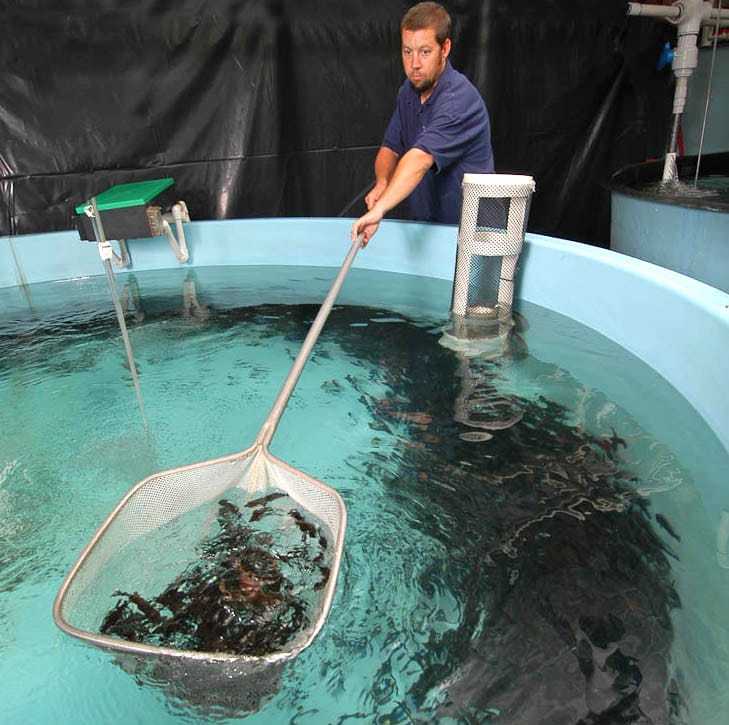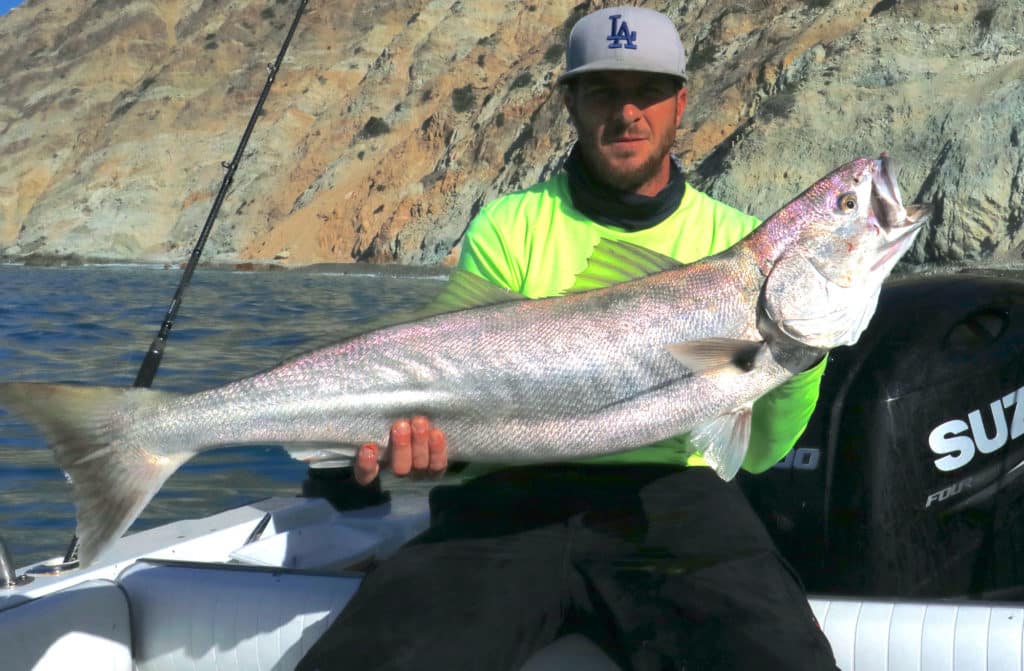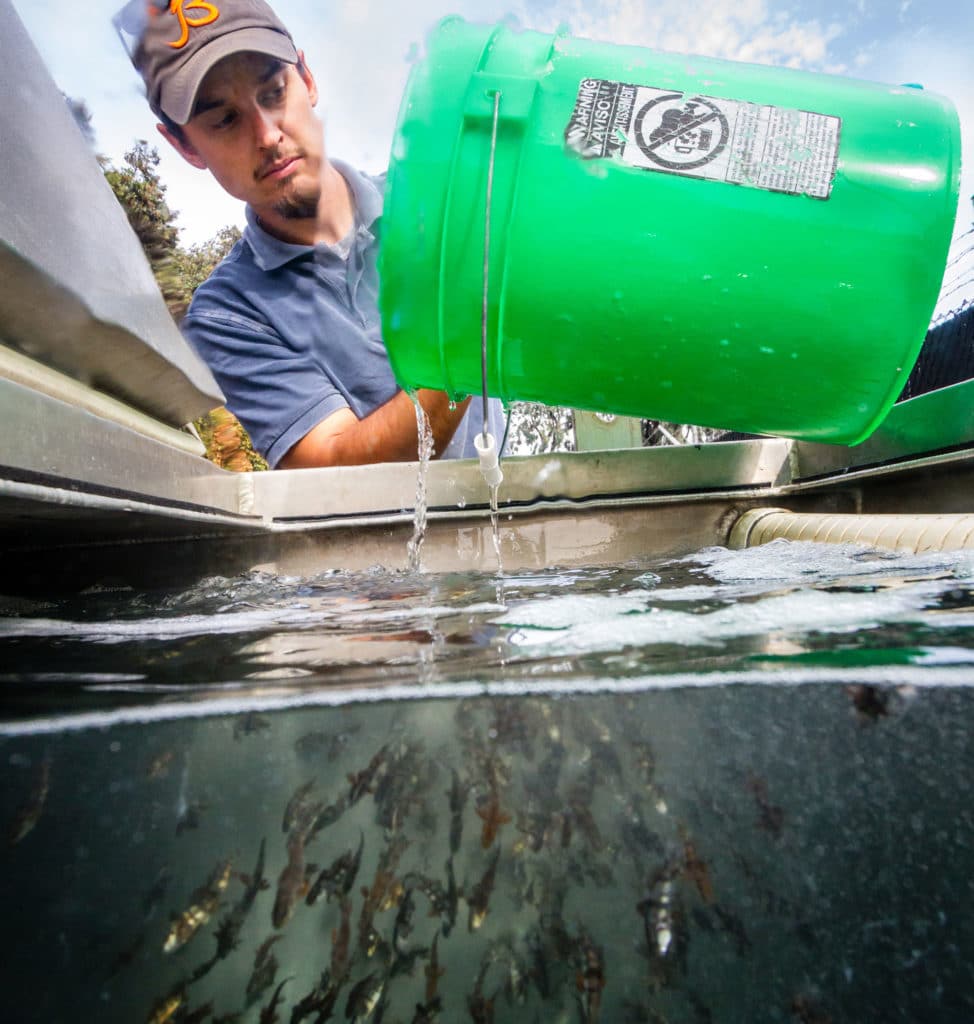
A new study four years in the making by a team of marine fisheries and genetic scientists indicates that many more white seabass in California ocean waters emanate from the Hubbs-SeaWorld Research Institute (HSWRI) hatchery in Carlsbad, California, than previously thought.
Presented at the Aquaculture 2022 conference in early March in San Diego, California, the preliminary findings contrast sharply with a 2017 study that suggested less than 1 percent of white seabass caught in California were from the Carlsbad operation, known officially as the Ocean Resources Enhancement and Hatchery Program (OREHP). Researchers had based the previous findings on recovered coded wire tags that are routinely implanted in all juvenile white seabass at the hatchery.

In the new study led by HSWRI and a research team at the South Carolina Department of Natural Resources, Ellen Reiber, a graduate student at the College of Charleston, used genetic markers recovered from tissue samples and archived otoliths (bones from the inner ears of white seabass) from hatchery brood stock and approximately 700 captured sub-legal-size fish (less than 28 inches in length) from the Newport Beach, Oceanside and San Diego coastal areas since the mid-1990s. A comparative analysis of the genetic markers found that 46.2 percent of the white seabass caught in these areas originated in the hatchery, as compared to only 7.4 percent of those fish having coded wire tags.
As a side note, among 50 adult white seabass collected from the commercial fishery in Mexico, 30 percent were identified as originating from the hatchery, but none could be identified as having a coded wire tag. These results suggest a major issue with the reliability of the coded wire tagging system for long-term identification of hatchery-reared white seabass, says Mark Drawbridge, senior research scientist for the HSWRI and a member of the team that undertook the genetics study.
“Obviously, a large number of the coded wire tags were either shed or lost their detection signal,” Drawbridge said. “We don’t know the reason, but we need to understand why—that will be a priority for our continuing research.” While still awaiting peer review and publication in a scientific journal, the eye-opening study is entitled Population Genetic and Stock Enhancement Tools for Conservation of the Overfished White Seabass.
Read Next: California High School Students Rear and Release White Seabass

“This new study changes everything,” says Wayne Kotow, executive director the Coastal Conservation Association of California and vice chair of the Ocean Resources and Enhancement Advisory Panel, which helps guide OREHP efforts. “While the impact of the OREHP had previously been panned as minimal, this study casts a far more positive light on the hatchery program.
“Anglers have always been suspicious of the results of the previous study, as it flew in the face of the great fishing for white seabass that we have experienced in Southern California for the past 15 to 20 years,” Kotow adds. “Now we know that those suspicions were more than justified. It feels like sweet redemption for those of us in CCA Cal who have always believed so strongly in the white seabass hatchery program.”
CCA Cal has served as key partner in the OREHP, particularly in tending the hatchery’s network of grow-out pens in harbors and bays along the coast of Southern California and Santa Catalina Island. Fingerlings are transferred from the Carlsbad hatchery to the pens, where CCA Cal volunteers feed and care for the fish until the white seabass reach about 9 to 10 inches in length, which is when they are released. CCA Cal volunteers also participate in the OREHP brood collection efforts.
Funded largely by sales of the Ocean Enhancement Stamp required on annual California fishing licenses for anglers fishing in ocean waters between Point Arguello and the Mexican border, the OREHP has released more than 2.5 million juvenile white seabass along the Southern California coast and Santa Catalina Island since 1986. The program was established in 1983.









